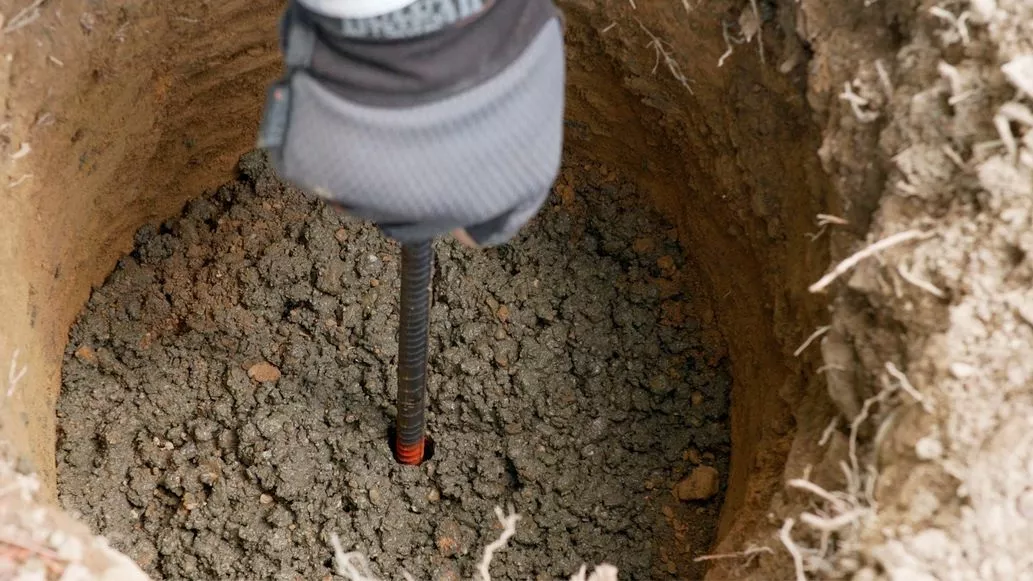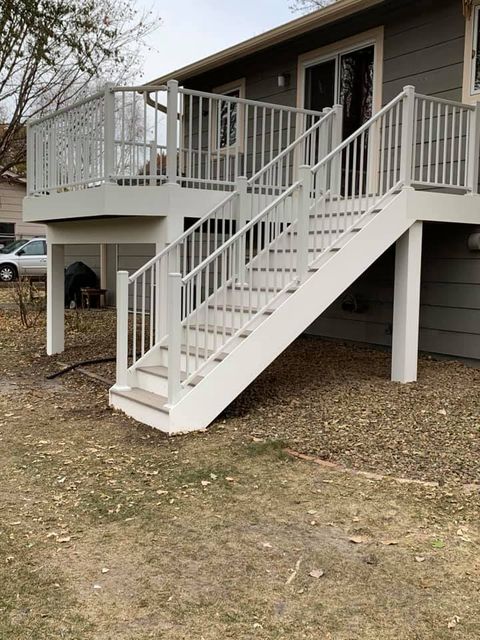Deck Footings 101: Browsing the Essentials for a Steady and Long Lasting Deck
Picking the Right Deck Footings for Security and Longevity
When it involves constructing a deck, among the most crucial decisions you will certainly make is picking the ideal footings for stability and sturdiness. The durability and security of your deck depend heavily on the sort of footings you select, as they supply the crucial assistance and stability to endure the examination of time. With a myriad of alternatives available, it can be frustrating to determine which grounds are best suited for your certain needs. In this conversation, we will discover the different kinds of deck footings, take into consideration the crucial elements to consider when deciding, and delve right into the benefits and drawbacks of various options. By the end, you will certainly have a clearer understanding of the selections available and be better outfitted to make an educated choice for your deck project.
Kinds Of Deck Footings
These grounds consist of a cylindrical hole filled up with concrete, which provides a solid foundation for the deck blog posts. Concrete pier footings are relatively simple to set up and supply superb security, making them a popular option for numerous deck projects.
One more sort of ground is the helical pile ground. Helical heaps are steel shafts with helical plates connected to them. These grounds are mounted by screwing them into the ground, which produces a protected structure for the deck. Helical stack grounds are excellent for locations with difficult soil problems, as they can be mounted in nearly any type of type of dirt. They additionally permit easy change and progressing of the deck if needed.
Additionally, some contractors select precast concrete grounds. These footings are constructed from long lasting concrete and come in numerous shapes and dimensions to suit various deck styles. Precast concrete grounds are practical to install and supply a stable base for the deck framework.
Finally, one more option is the post-in-anchor ground system. This kind of footing entails driving a steel anchor right into the ground and connecting it to the deck blog post. It provides adaptability in terms of placing the deck posts and appropriates for decks with lightweight frameworks.
When choosing the best kind of deck footing, it is important to take into consideration elements such as soil problems, deck lots, and local building ordinance (Deck Footings). Consulting with a professional specialist or structural designer can assist guarantee the appropriate footing is picked for a risk-free and stable deck
Elements to Take Into Consideration When Choosing Footings
When choosing the ideal footings for a deck, it is important to carefully think about different variables such as soil conditions, deck tons, and adherence to regional structure codes. These factors play a considerable function in making certain the security and resilience of the deck framework.
The type of dirt on which the deck will certainly be constructed establishes the type of footings needed. On the other hand, decks built on clay or large dirts may require grounds that can fit the soil's propensity to increase and contract.
Another vital aspect is the deck tons. The weight of the deck, including the products made use of and any type of prospective online loads such as furnishings or celebrations, need to be taken into consideration when selecting grounds. The grounds need to be developed to bear the weight of the deck and disperse it equally to stop any kind of architectural problems or failings.
Finally, adherence to local building ordinance is paramount. Building codes differ from region to region, and it is vital to adhere to the certain demands established by the regional authorities. Deck Footings. These codes make sure that the deck is developed securely and meets the needed requirements for architectural integrity and load-bearing ability
Concrete Footings: Advantages And Disadvantages

Concrete footings supply a number of benefits and drawbacks when made use of as the structure for a deck. On the positive side, concrete grounds give excellent stability and longevity. Concrete is a strong and stiff material that can support heavy tons and withstand different weather. It likewise has a lengthy life-span, making it a reputable option for lasting use.
Another advantage of concrete footings is their versatility. They can be poured right into various forms and dimensions to suit numerous deck layouts and arrangements. Concrete grounds can be personalized to fit the particular requirements and demands of the deck structure.
Nevertheless, there are additionally some drawbacks to making use of concrete grounds. This can raise the overall cost of the deck project and may call for specialist support.

Helical Piers Vs. Sonotubes: Which Is Better?
In considering the foundation options for a deck, the comparison click here to read in between helical piers and sonotubes is vital in establishing the remarkable option. They are turned into the ground utilizing hydraulic machinery, supplying a long lasting and stable foundation for the deck.
The helical plates on the piers create a solid hold with the dirt, protecting against any type of movement or moving of the deck. Sonotubes, on the other hand, depend entirely on the concrete loading for stability, which might not provide the very same level of stamina and resistance.
In terms of setup, helical piers are reasonably easier and faster to mount compared to sonotubes. The hydraulic equipment used to turn the piers into the ground makes certain a efficient and fast process. Sonotubes, on the other hand, need excavating holes and pouring concrete, which can be labor-intensive and time-consuming.
Furthermore, helical piers are an even more versatile choice. If required, they can be used in different dirt problems and can be adjusted or strengthened. Sonotubes, on the various other hand, might require additional support, such as rebar, in particular dirt problems or areas with high load demands.
Picking the Right Footings for Your Deck's Dimensions
For ideal structural integrity, it is important to thoroughly choose the proper grounds that straighten with the measurements of your deck. The measurements of your deck, including its size, elevation, and size, play a considerable function in establishing the type and size of footings needed.
When selecting footings for your deck, it is vital to take into consideration the load-bearing address ability of the soil. The weight of the deck, combined with the weight of any kind of furnishings or individuals on it, applies a significant force on the grounds (Deck Footings). It is vital to choose grounds that can effectively support this weight without changing or sinking over time.
Bigger decks with higher dimensions call for larger grounds to provide enough security and support. The form of the footings, whether they are rounded or square, depends on the style and format of the deck.
Final Thought
Finally, choosing the ideal deck footings is crucial for ensuring stability and resilience. Elements such as the kind of footings, the deck's measurements, and the benefits and drawbacks of different alternatives should be considered. Concrete grounds offer stamina and longevity, however might be a lot more costly and time-consuming to mount. Helical piers and you can try here sonotubes have their very own advantages and downsides. Inevitably, selecting the proper grounds for your deck's particular demands is important for a durable and effective structure.
These footings consist of a cylindrical hole filled up with concrete, which supplies a strong structure for the deck articles. Concrete pier grounds are reasonably very easy to mount and provide superb security, making them a preferred selection for several deck tasks.
Precast concrete grounds are convenient to set up and offer a steady base for the deck structure.
It provides versatility in terms of positioning the deck articles and is ideal for decks with light-weight structures.
Concrete footings offer several benefits and disadvantages when used as the foundation for a deck.